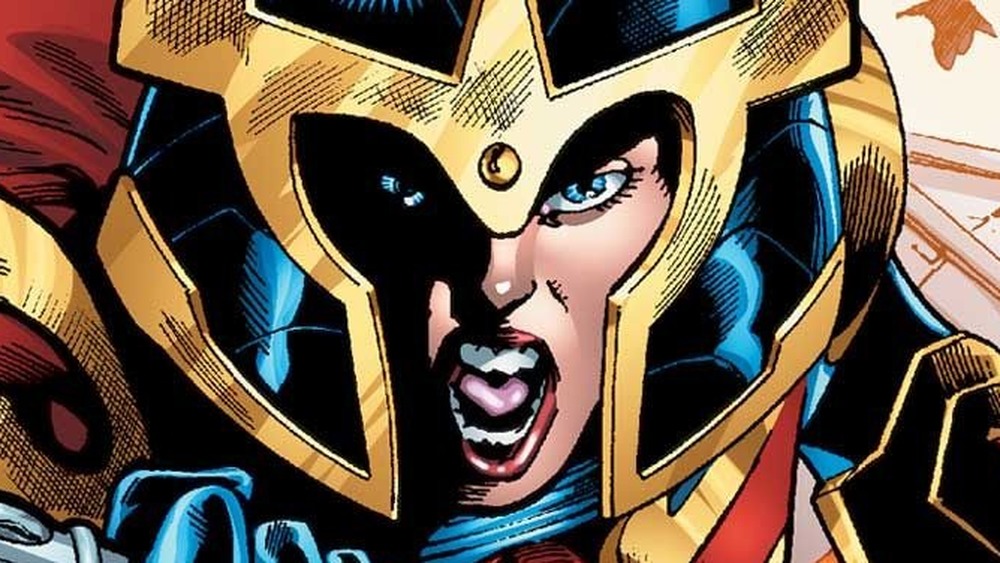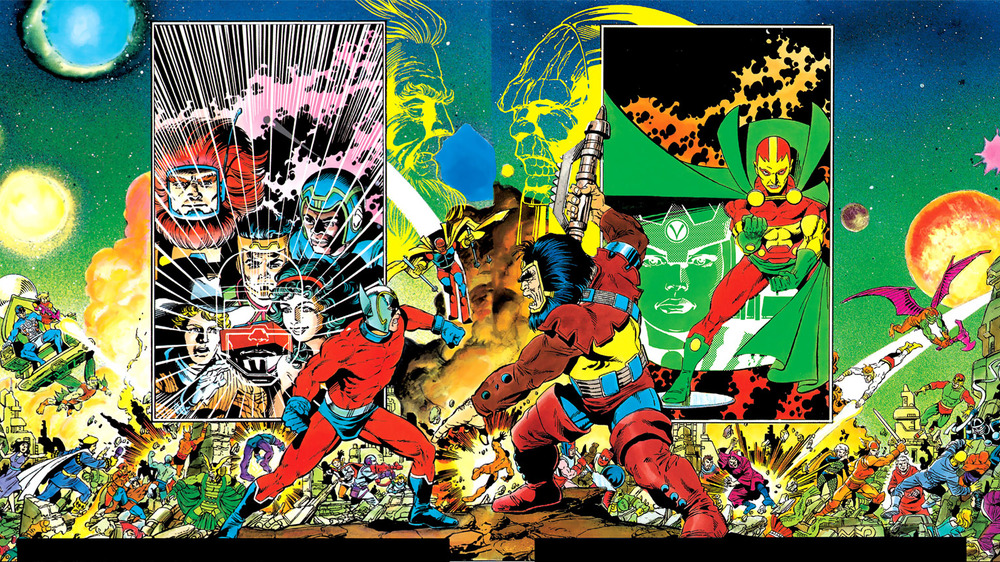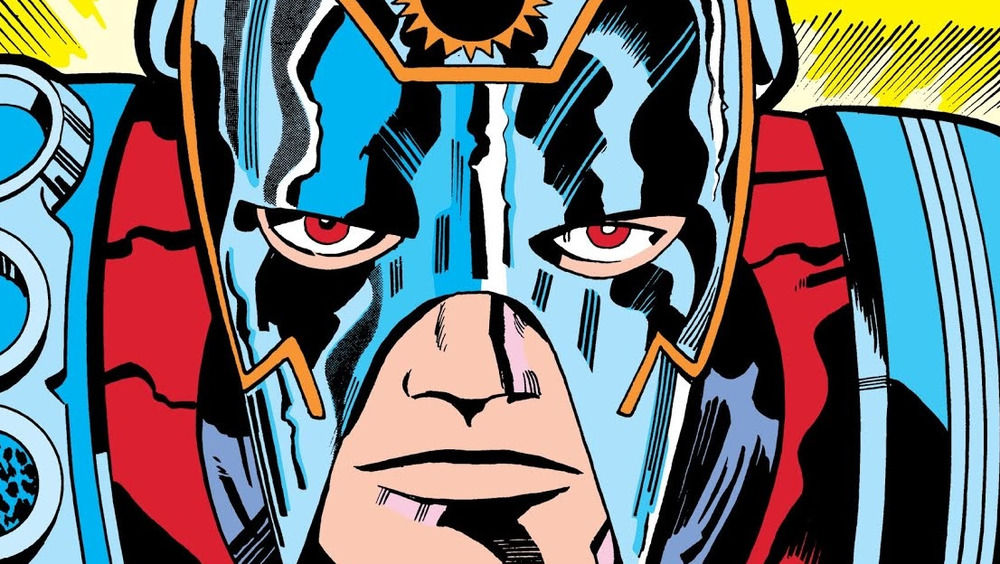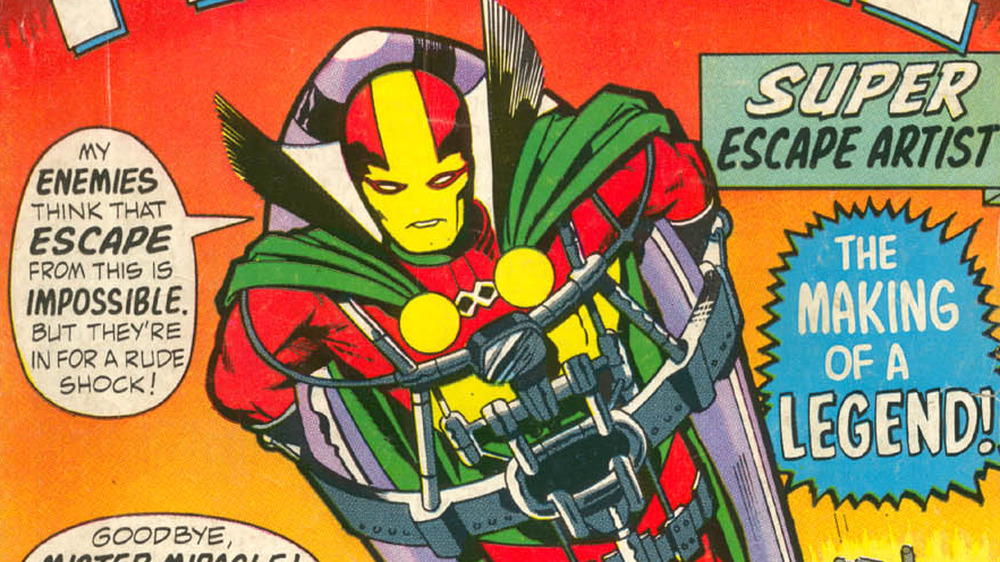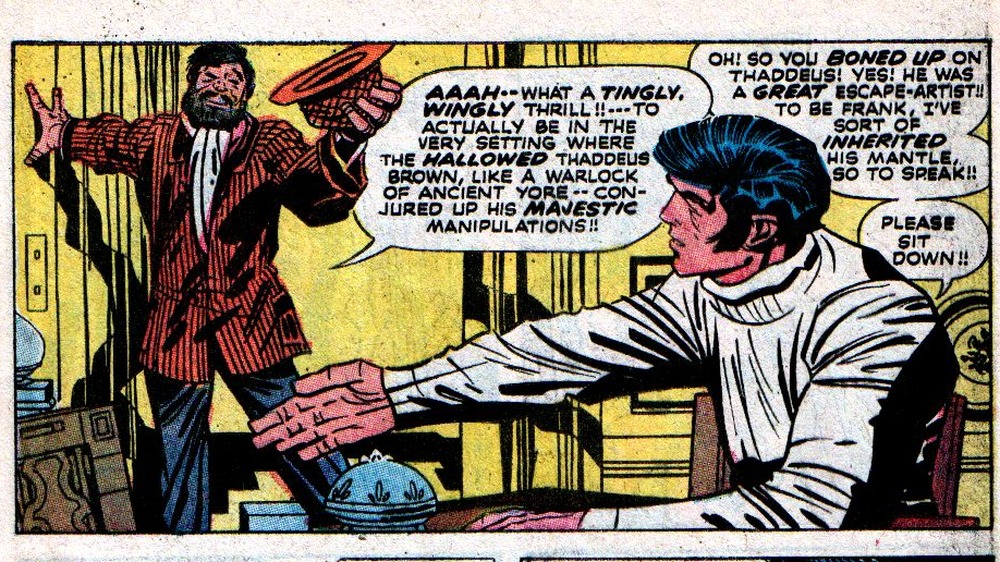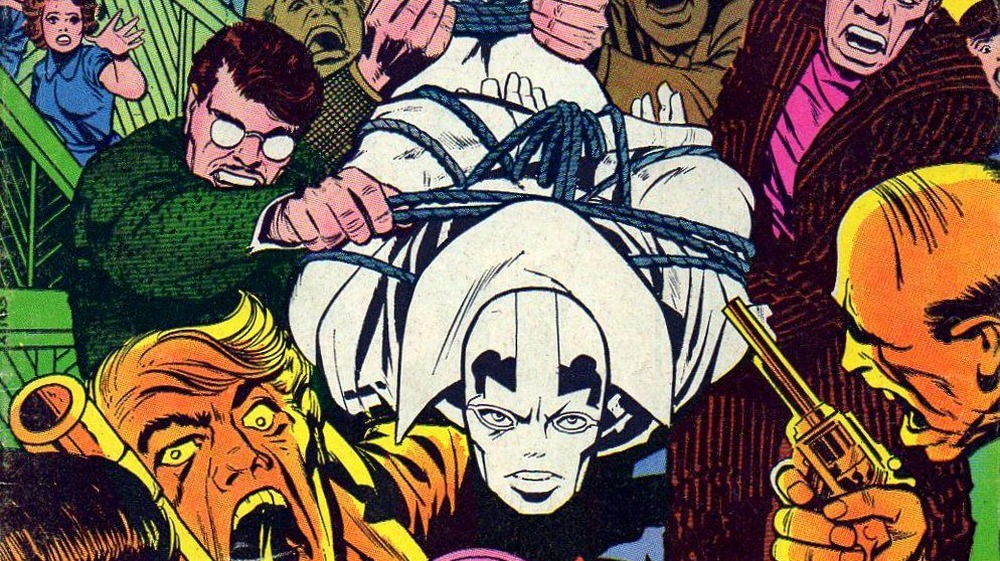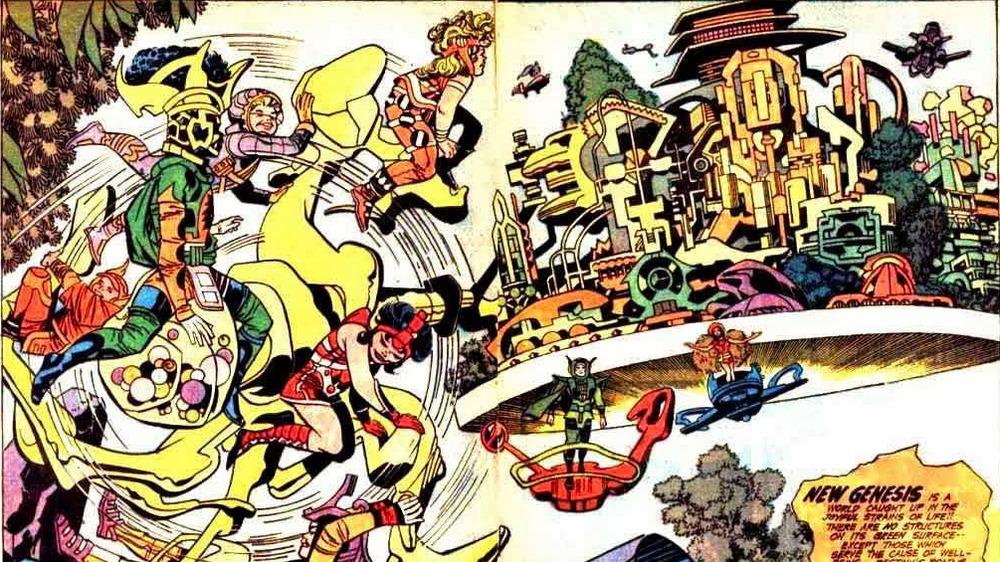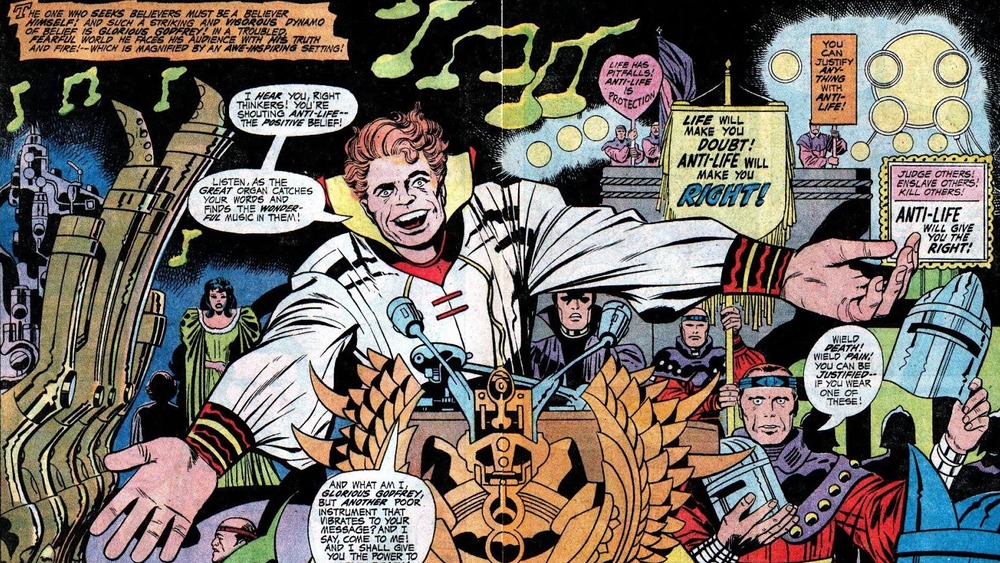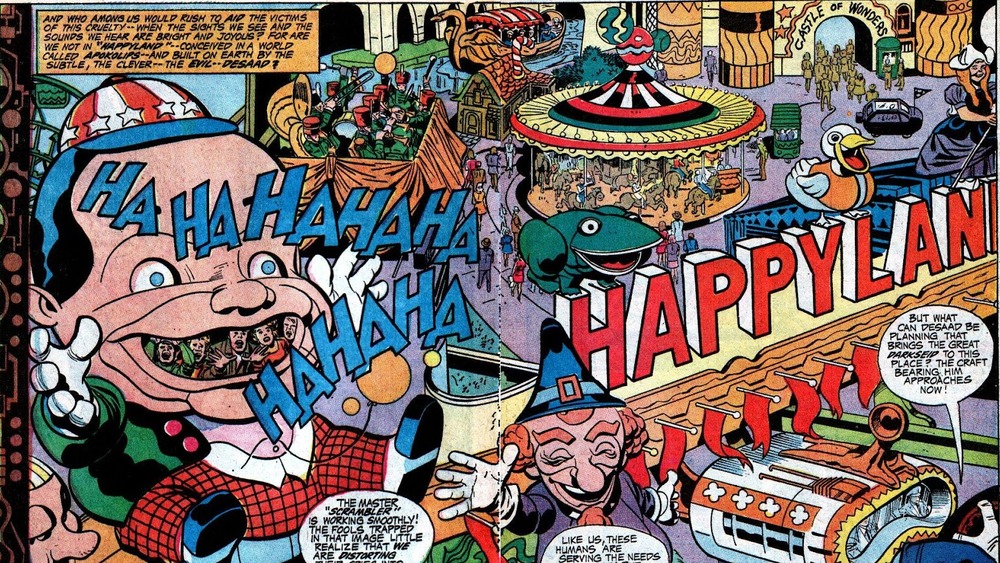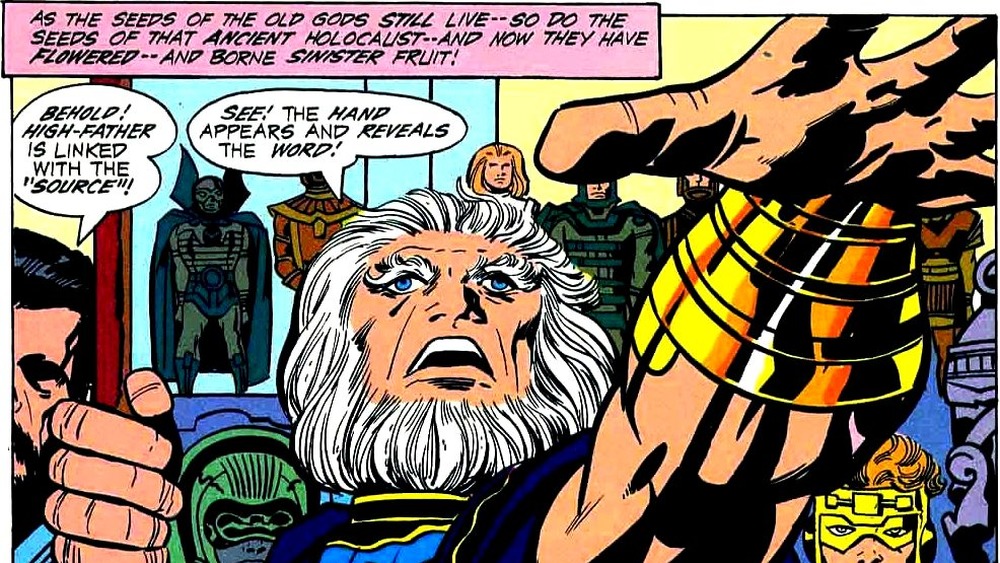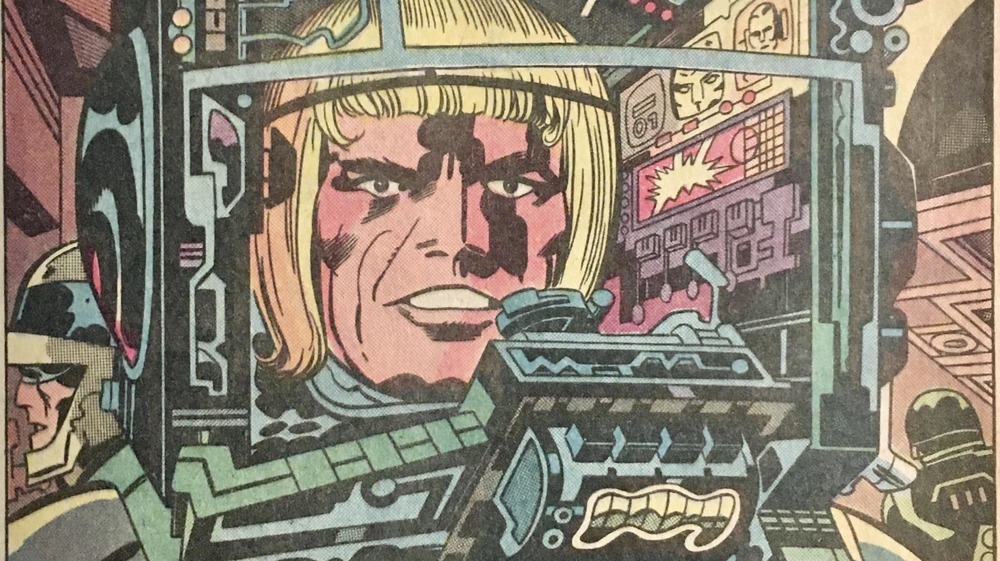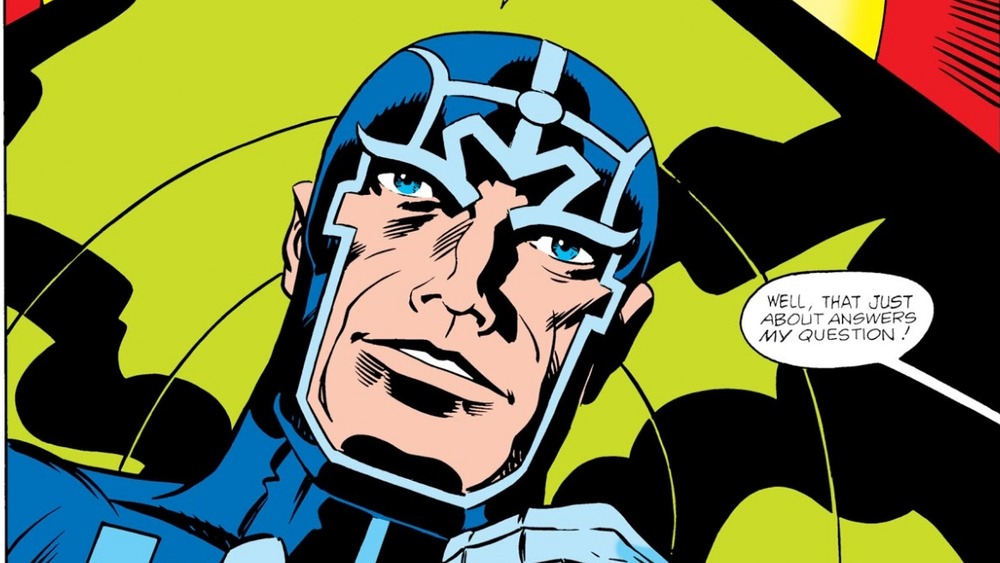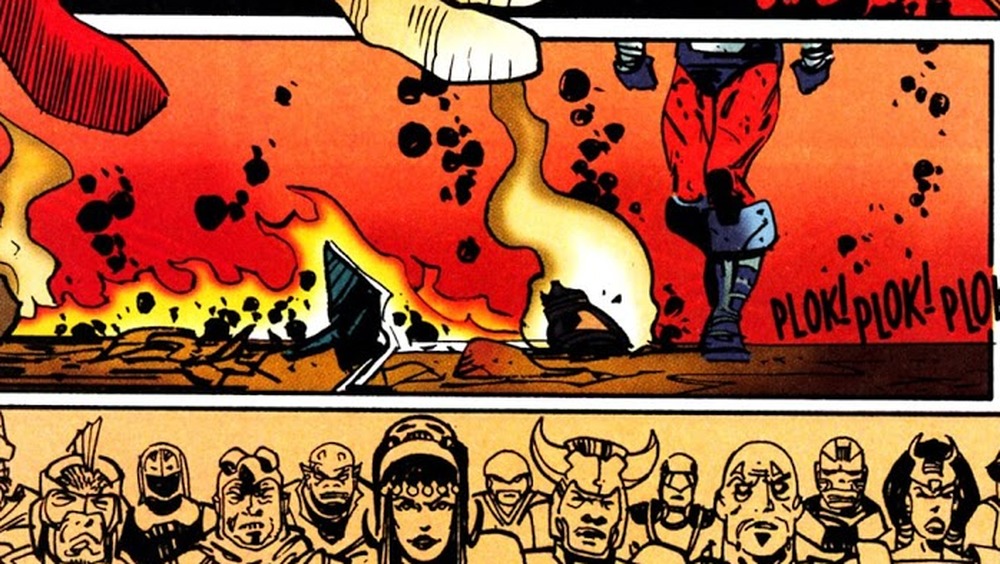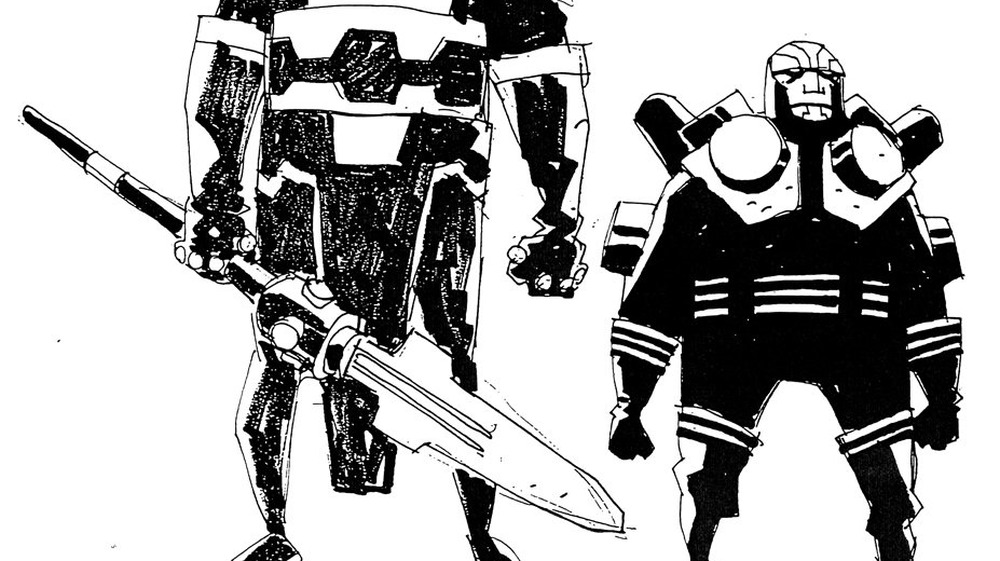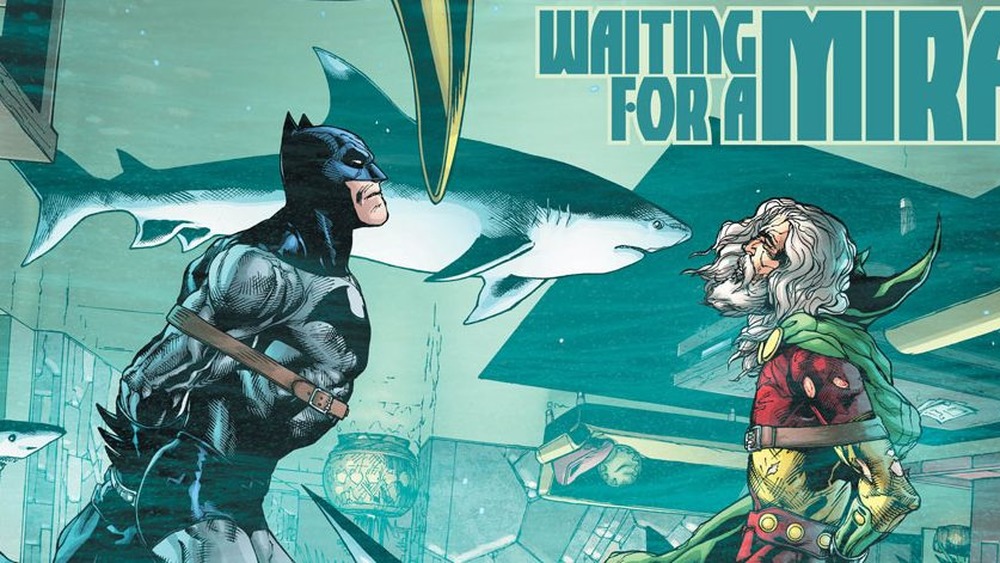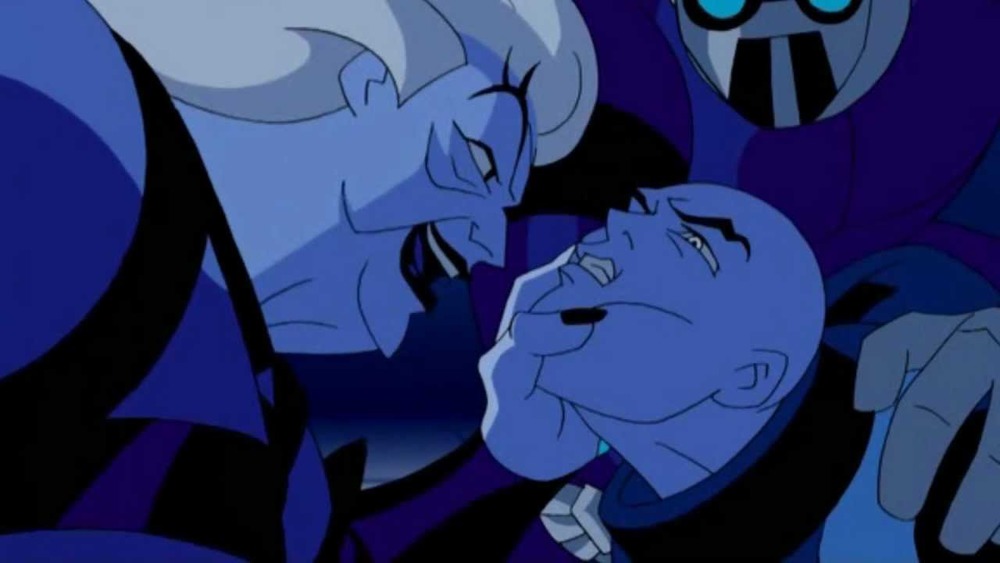The Untold Truth Of DC's New Gods
In 1970, a comics revolution happened right under most readers' noses. After creating the Avengers, the X-Men, the Hulk, and nearly all the rest of Marvel's superstars with Stan Lee, Jack Kirby moved across town to DC Comics, took over one of their lowest-selling titles, Superman's Pal, Jimmy Olsen, and used it to lay the groundwork for a true comic book epic.
Back when the phrase "summer crossover event" would get you blank stares around the DC offices, Kirby launched three interconnected titles, Forever People, Mister Miracle, and The New Gods, all telling the same story. As the New Gods title should tell you, it was a full-on modern mythology, built from the ground up, transplanting the ancient struggle between good and evil to the planets of New Genesis and Apokolips, homes of the all-loving Highfather and the dictatorial Darkseid.
These astronomical plans were squashed before they could really get off the ground, but in the decades since, they've become the backbone of the DC Universe, from the comics to the Justice League animated series to the team's recent movie. As you might expect from such an ambitious concept, the New Gods are full of surprising stories, both on the page and behind the scenes. Here's just a few.
The New Gods' names comes from a wide variety of sources
If New Gods was going to take on a project as daunting as creating a whole new mythology, its creator was going to need a little help from the classics. The saga's protagonist, haunted master warrior Orion, took his name pretty directly from the great hunter of Greek mythology. The Jewish Kirby looked to his own heritage for Highfather Izaya, named for the biblical prophet Isaiah. Serifan, a cowboy-themed member of youthful adventurers the Forever People, was inspired by the angelic Seraphim of the Hebrew texts. That name made it into the Christian Bible, but Gentiles may have a harder time recognizing the scholarly Metron, named after the "recording angel" Metatron.
Other characters were less religious and more literary. Darkseid's brutish son Kalibak comes from the Shakespearean Caliban, the half-man from The Tempest. Master torturer Desaad is a phonetic respelling of the Marquis DeSade, a French erotic author whose fetish for pain added the word "sadism" to the dictionary. Other characters are more mundane, like escape artist Mister Miracle's punny real name Scott Free or the Female Furies Stompa (she stomps) and Lashina (she lashes).
Orion is a self-portrait
The hero of the original New Gods series was Orion, the "dog of war." He's so important Ronin Ro's Tales to Astonish says Kirby originally pushed to name the book Orion. The son of Darkseid, raised by Highfather while Darkseid raised Highfather's natural son as part of a pact to maintain peace between the two worlds, Orion is a deeply complex character, fighting for good and striving for the pacifist ideals of New Genesis but frequently tempted into horrific brutality. In one especially shocking scene from New Gods #5, Orion's violence literally reveals his true, ugly face, as the high-tech Mother Box that projects a more pleasing image breaks down.
Kirby's longtime assistant Mark Evanier makes it plain where the artist found his inspiration for Orion: "Orion is Kirby." It's not hard to see what he means. Jack Kirby was a veteran of World War II. That service defined him, and Evanier recalls he'd tell stories about it "at the slightest relevance."
But the '40s were a long time ago, and the antiwar '60s casts a long shadow over The New Gods. The older man embraced the younger generation's ideals wholeheartedly, as seen with his hippie heroes the Forever People. How did he reconcile those two sides of himself? You can see those questions play out in Orion.
Mister Miracle was inspired by a comic artist's side gig in escape artistry
One of the New Gods' most enduring characters was Mister Miracle, Highfather's son who was raised in the horrors of Apokolips' ironically named Happiness Home. He escapes to Earth, where he adopts a new identity as professional escape artist Scott Free.
Like many New Gods concepts, Mister Miracle is one Kirby had played with for years, imagining him as a standalone superhero before folding Scott into his new mythology. The idea came from one of Kirby's cohorts at Marvel, Jim Steranko, who's best known for his ambitious, innovative art for Captain America and Nick Fury: Agent of S.H.I.E.L.D. but also held down many other jobs during his youth, including one as an escape artist. Something about that stuck in Kirby's imagination and in turn inspired Michael Chabon's bestselling novel The Amazing Adventures of Kavalier & Klay, about a comic artist who used escape-artist techniques to escape from Nazi-occupied Prague and passed those skills on to his comic book hero, the Escapist.
Jack Kirby got petty with his old partner with a Mister Miracle character
The New Gods was one of Kirby's first solo works after the end of a long and fruitful collaboration at Marvel with the legendary writer Stan Lee. But Kirby couldn't wait to get out — for most of his life, he resented Lee for taking what he felt was a disproportionate amount of the money and credit for their work together.
Kirby shot back in Mister Miracle #5, which introduced the unforgettable Funky Flashman, a con man who was unmistakably based on Lee's appearance and verbose, grandiose speech patterns. It didn't start out that way — according to Mark Evanier (via CBR), Flashman had been inspired by Don Wallace, the owner of Marvelmania International, a company that allegedly sold Marvel merchandise. But in Evanier's words, "Let's say that a lot of kids never got the Silver Surfer posters they ordered, and a lot of artists and folks who worked for him never got paid." So when Kirby was hunting for ideas for new stories, Evanier suggested something based on their experience with Wallace, but as the process went on, Wallace turned into Flashman, who turned into Stan Lee.
The printers screwed up Mister Miracle's costume
After years of butting heads with Stan Lee and the rest of Marvel management, Kirby hoped that moving to DC would finally give him the chance to do things his way. But even though he got to write his own stories, the collaborative nature of comics meant he had to rely on other creators, who might have different visions for the book when they weren't just plain incompetent. It's hard to say which was the case with the colors for Mister Miracle's debut, but for whatever reason, they didn't come out like Kirby planned at all. According to Evanier, the cover has Scott Free in his classic red, yellow, and green costume, but inside, he turns purple. Kirby wasn't happy, and he managed to get the cover changed just days before the issue shipped, but it was too late for the interior.
That wasn't the end of Mister Miracle's color woes. The cover to #3 shows him without any color at all. What happened? In Kirby's words, "It looks like [DC's] infallible Production Department screwed up."
An entire crowd went missing from a page of The New Gods
Before Kirby's pencil art could go to the printers, it had to be inked, and that job went to a variety of artists, some better than others. The first to take point was Vince Colletta, who'd followed Kirby from Marvel. Unfortunately, Colletta also brought some of his worst habits along with him: As Ronin Ro explains, Colletta only inked what he felt like inking. He'd replace imaginatively designed alien skylines with simple checkerboard-patterned blocks and turn fully drawn figures into silhouettes or ignore them entirely.
Worse, he took the New Gods gig from the legendary Mad/Tales from the Crypt Wally Wood, who volunteered his talents only to learn the job was already taken. Kirby's friends kept bugging him to fire Colletta, but he didn't want to hurt the inker's career. When Mark Evanier showed Kirby a page where Colletta had removed a whole crowd scene, he finally got on the line with his editor Carmine Infantino, who talked him into letting Colletta stay.
The last straw was when the New York-based Colletta let a DC editor alter the original pencil art. A talented fan named Mike Royer had been angling for the job, and since he and Kirby were both based on the West Coast, working together prevented editors in the East from making changes, so Colletta was out and Royer was in.
Glorious Godfrey was combined from a preacher and a pitchman
Another of the most memorable New Gods characters is Glorious Godfrey, a servant of Darkseid who carries out his master's search for the Anti-Life Equation on earth by amassing millions of fanatical worshippers of Anti-Life.
Like so many others, this character came from reality. According to Evanier, Kirby's main inspiration was the legendary evangelist Billy Graham, who Kirby distrusted thanks to what Kirby saw as fear-mongering apocalyptic rhetoric and Graham's friendship with Richard Nixon, who Kirby loathed more than any man alive.
Kirby also drew from the radio/TV host and commercial pitchman Arthur Godfrey — the idea of combining the two probably says something about how Kirby viewed Graham's motives, especially since it adds the pun of "God-free" to the character.
Later writers would continue updating Glorious Godfrey to reflect the modern state of demagoguery. In Legends, John Ostrander, John Byrne, and Len Wein reinvented him as G. Gordon Godfrey to satirize Watergate conspirator and conservative activist G. Gordon Liddy. The animated Young Justice featured him as a host on a Fox-like news network, with Tim Curry's British-accented performance drawing parallels to Piers Morgan. In Tom King and Mitch Gerads' Mister Miracle, Godfrey looks more like Seth Meyers — something Meyers made sure to point out when he had King on the show.
Desaad ran a killer theme park
The Fourth World series had lofty ambitions, but Kirby never let that stop him from getting wild and wacky with it. There's no better example than The Forever People #4, with a plot that's equally ridiculous and horrific about master torturer Desaad turning an entire theme park into a torture device in order to search visitors' minds for the Anti-Life equation, but mostly just to amuse his love of cruelty. Desaad cleverly disguises his tortures behind Happyland's happy exterior. One "ride" keeps the tormented prisoners from calling for help by scrambling their screams into laughter.
It's a wild concept, and Kirby makes the most of it. Each of the Forever People gets a separate torture, including Big Bear, who goes to the "Resonance Room," where he's buffeted with "vibro-waves" fired by the visitors to the shooting gallery, and Vykin, who gets stuck between the slats in a roller coaster that keeps almost — but not quite — crushing his head. They escape, and so does Desaad, free to create more instruments of torture — but he'd never be quite this imaginative again.
The New Gods may have inspired Star Wars
The ideas of the New Gods may not have taken Jack Kirby to fame and fortune, but they did very well for other people in one the biggest sci-fi hits of all time. No one's ever confirmed New Gods inspired Star Wars, but there are an awful lot of parallels. To start with: The young hero has to fight an intergalactic tyrant who turns out to be his own father — even "Luke Skywalker" sounds a lot like The Forever People's Mark Moonrider.
While Kirby's heroes are New Gods, like it says in the title, they worship an even higher divinity they call the Source, just a few letters away from Star Wars' Force, and Orion even uses an "Astro-Force." Unlike the Force, the Source has no Dark Side — but New Gods does have a Darkseid.
Kirby finally got to end his story with 1985's The Hunger Dogs, but the popularity of Star Wars changed some of his plans because he didn't want to be accused of ripping off the movie that potentially ripped him off. According to Ro, Kirby rewrote his ending after he saw Darth Vader take his son's side in Return of the Jedi. We don't know much more, but it's easy to guess, especially with this tantalizing Kirby quote: "A son in the end will never hurt his father — that's my personal belief — and a father will never hurt his son."
Kirby kept the story of the New Gods going for another publisher
According to CBR, The New Gods began life as a pitch for Marvel's Thor, a retelling of the myth of Ragnarok that would end with Thor and company dead and new gods taking their place. Marvel vetoed it, but the story made it to the page almost intact — you can even see Thor's helmet among the wreckage of the Old Gods in Forever People #5.
Despite his hopes for a better deal at DC, Kirby still didn't own the New Gods, which meant he couldn't continue his story after he left the company. In Captain Victory and the Galactic Rangers, Kirby introduced a new hero who says he's the son of a great, never-named warrior. Readers should be able to put together his father's identity from the equipment Victory inherited from him, including Orion's distinctive astro-harness. That makes Captain Victory's grandfather Darkseid, who appears in the series, and even if he's renamed Blackmass and keeps his trademarked image hidden in shadow, the real ones, as they say, know.
Thanos began life as a Metron riff
New Gods has inspired literally hundreds of comics creations, maybe none as influential as Jim Starlin's Thanos, who became one of the most recognizable faces in pop culture with Josh Brolin's memorable performance in the Avengers movies Infinity War and Endgame. The character is similar enough to New Gods' Darkseid that fans speculated DC would have a hard time keeping the original from being dismissed as a copy in Zack Snyder's Justice League and other future projects. But Starlin originally had an entirely different New Gods character in mind.
When Starlin began sketching Thanos, he says, "if he looked like anybody, it was Metron." He's even introduced in Iron Man #55 riding a floating throne based on Metron's Mobius Chair. When editor Roy Thomas saw Starlin's art, he had one suggestion: "Beef him up! If you're going to steal one of the New Gods, at least rip off Darkseid, the really good one!" Starlin obliged, and Thanos only became more Darkseid-y as the years went on.
An artist snuck Marvel's Apocalypse onto Apokolips
While Jack Kirby was forced to leave the New Gods long before his time, other writers and artists have kept the story going in the decades since. One of the most popular was Walt Simonson, who went from continuing Kirby's mythological Thor to working on Kirby's new mythology at DC with Orion.
And Simonson repeated his success on Thor in a more direct way with Orion #5. Just as Thor #380 was filled cover-to-cover with nonstop battling between Thor and the Midgard Serpent, Simonson's Orion story is devoted entirely to a fight between Darkseid and his son.
Running along the top and bottom of each page, Simonson draws the reactions from the crowd of Apokolips citizens and the earthbound news crew Orion has brought to witness the fight. Most people would skim past all these tiny faces to look at the action, so Simonson has some fun sneaking a couple private jokes past them. Best of all, one punny page features Apocalypse, the X-Men villain played by Oscar Isaac in the movie of the same name.
Hellboy's creator designed his own unmade New Gods cartoon
One of the biggest Jack Kirby fans in the comic biz is Mike Mignola, best known as the creator of Hellboy, but who also drew several of the New Gods when he collaborated with Jim Starlin on Cosmic Odyssey.
In the late '90s, Mike Mignola got a chance to reinvent the New Gods for an animated movie. You can see some of his sketches on CBR, including intriguing new ideas like tiger-riding warriors and a version of Darkseid's taskmaster Granny Goodness with Bride of Frankenstein hair. It's fun to see the melding of Kirby's characters with Mignola's style, and you can even see Hellboy's "right hand of doom" on Darkseid's minions the Parademons and Mister Miracle's "fighting gloves."
Some characters are radically different, like Mister Miracle, who's an "Apokoiptikan prince" instead of a lowly orphan, and the Female Furies, who wear darker outfits unified by a skull motif. These drawings would have been something to see in motion, but sadly, the chance never came.
Batman and Mister Miracle share a trainer
Comics are full of what fans call "legacy heroes," new characters who take their identities from existing ones, like Ms. Marvel or Stargirl. Mister Miracle's a legacy hero too, in a way, even though the "original" hasn't been around any longer than Scott Free in real-world time. When Scott escapes from Apokolips to Earth, he stumbles into a rehearsal by Thaddeus Brown, an escape artist who goes by Mister Miracle. Thaddeus offers Scott a place to stay, and when gangsters murder Thaddeus, Scott keeps the act going himself.
Death tends to put a damper on a character's popularity (most of the time), but Thaddeus Brown resurfaced in Detective Comics #997, where Peter Tomasi and Doug Mahnke pit Batman against a mysterious villain who's attacking Batman's mentors. That turns out to include Thaddeus Brown, who taught a young Bruce Wayne the art of escapology, apparently alive again after one of the DC's Universe's many timeline resets.
Granny Goodness caused some confusion on twitter
One of New Gods' most unforgettably unique characters is Granny Goodness, a sweet old lady who just so happens to spend her life tormenting and brainwashing children into bloodthirsty soldiers for Darkseid. Superman: The Animated Series upped the oddness by casting a male actor, Ed Asner, as Granny's voice. It was an inspired choice, and Asner, star of The Mary Tyler Moore Show, Elf, and Up, continued playing Granny through decades' worth of movies and TV shows.
One enthusiastic fan paid tribute to Asner's performance on Twitter, writing: "One of the best things about the DCAU nobody mentions is how they were like "Hey Granny Goodness looks like Ed Asner in drag, wanna see if he'll voice her?" and not only DID he, he voiced her in basically all of her appearances since until he died."
Ed Asner, very much alive, was flattered enough to respond, while trying to gently break the news: "Um Eugene. Thank you for your support. I have one correction to make." Now that Granny's been recast yet again for Zack Snyder's Justice League, Asner might need to make some public appearances just to reassure everyone he's still kicking.
